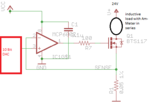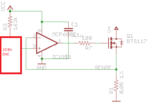swapnil14327
Newbie level 5
Hello All,
Can someone point me to a circuit, where I can pro-grammatically using SPI/I2C/PWM etc protocols set current source from 0mA to 500mA in steps of 1mA.
may be an IC or even transistor-MOSFET based circuit design.
Vin MAX= 24V Vin MIN = 3V
Vout Max= 24V
Iout= 0mA to 500mA in steps of 1mA ..
current managed completely using microcontroller and not external resistor.
Thanks in Advance..
Can someone point me to a circuit, where I can pro-grammatically using SPI/I2C/PWM etc protocols set current source from 0mA to 500mA in steps of 1mA.
may be an IC or even transistor-MOSFET based circuit design.
Vin MAX= 24V Vin MIN = 3V
Vout Max= 24V
Iout= 0mA to 500mA in steps of 1mA ..
current managed completely using microcontroller and not external resistor.
Thanks in Advance..



